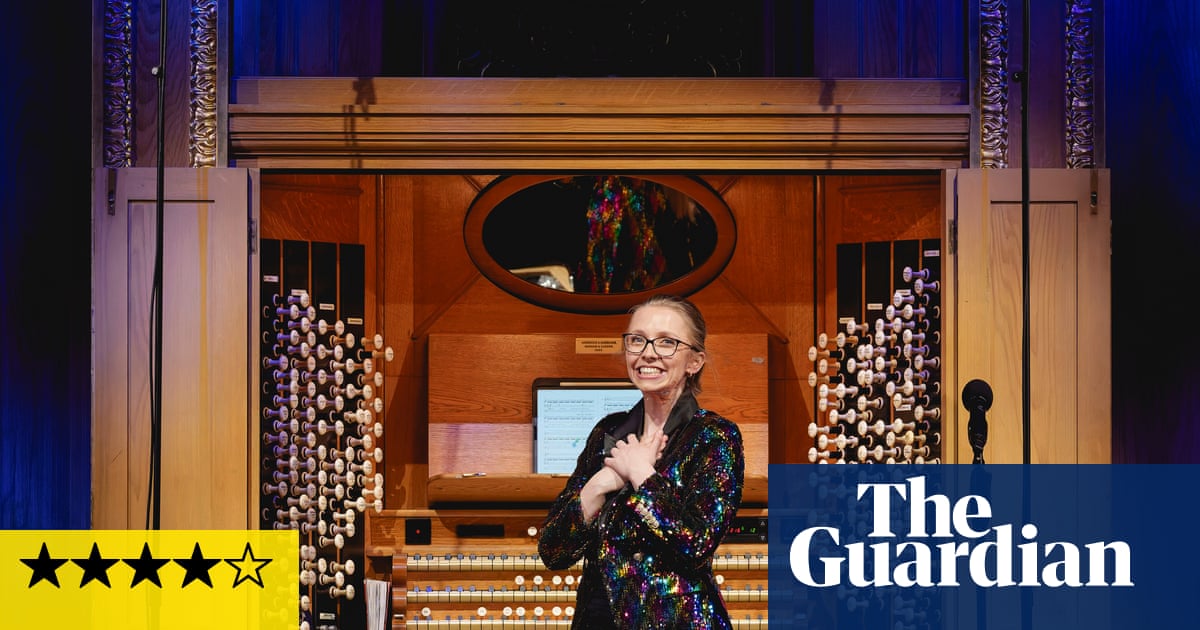TheHenry Willis organ– 70ft high, 65ft wide, with 9,999 pipes – has long been the criminally underused centrepiece of the Royal Albert Hall, but it has finally found someone big enough to bring it to life. Anna Lapwood, the venue’s first ever official organist, might be a slight 5ft 3in but the so-called “TikTok organist” – with more than 2m social media followers – is charismatic enough to sell out a midweek gig and have a packed hall eating out of her hand.
Tonight she and her organ battle with the Philharmonia Orchestra and Chorus, under the baton of the ever adventurous German conductor André de Ridder. Lapwood’s obsession with film soundtracks could suggest a rather glib populism – she even apologises for starting with a Hans Zimmer theme from The Da Vinci Code (“I don’t know why it made me cry, it’s not even a very good film”) and encores with a solo arrangement of a throwaway theme from How to Train Your Dragon. But the rest of the show has heft. Saint Saëns’ third symphony, probably the most famous piece for organ and orchestra, takes up most of the second half, while a suite from Zimmer’s Interstellar soundtrack shifts the organ-heavy themes into hypnotic, Philip Glass-like territory.
Better still are the two pieces specially written for tonight. A toccata by young composerKristina Arakelyanis a wonderful mix of whimsy and horror, filled with slippery harmonies, gurgling sci-fi passages and studied discordancy. Max Richter’s 33-minute Cosmology conducts a circular voyage through space – from the tentative, irregular, arpeggios of the intro, to the heart-tugging, funereal organ drones of the second movement, the glistening modulations and irregular time signatures of the third, while the final movement mixes Lapwood’s dreamy, synth-like chord washes with the female voices of the choir she leads at Pembroke College, Cambridge.
What’s especially welcome is Lapwood’s efforts to talk to the audience and put the music into context. As well as being an evangelist for the pipe organ, and a champion of female musicians (her#PlayLikeAGirl T-shirtsare all over the hall), she’s also becoming one of the most effective ambassadors for classical music since Leonard Bernstein – a musically omnivorous enthusiast who knows how to communicate with a wider audience.
